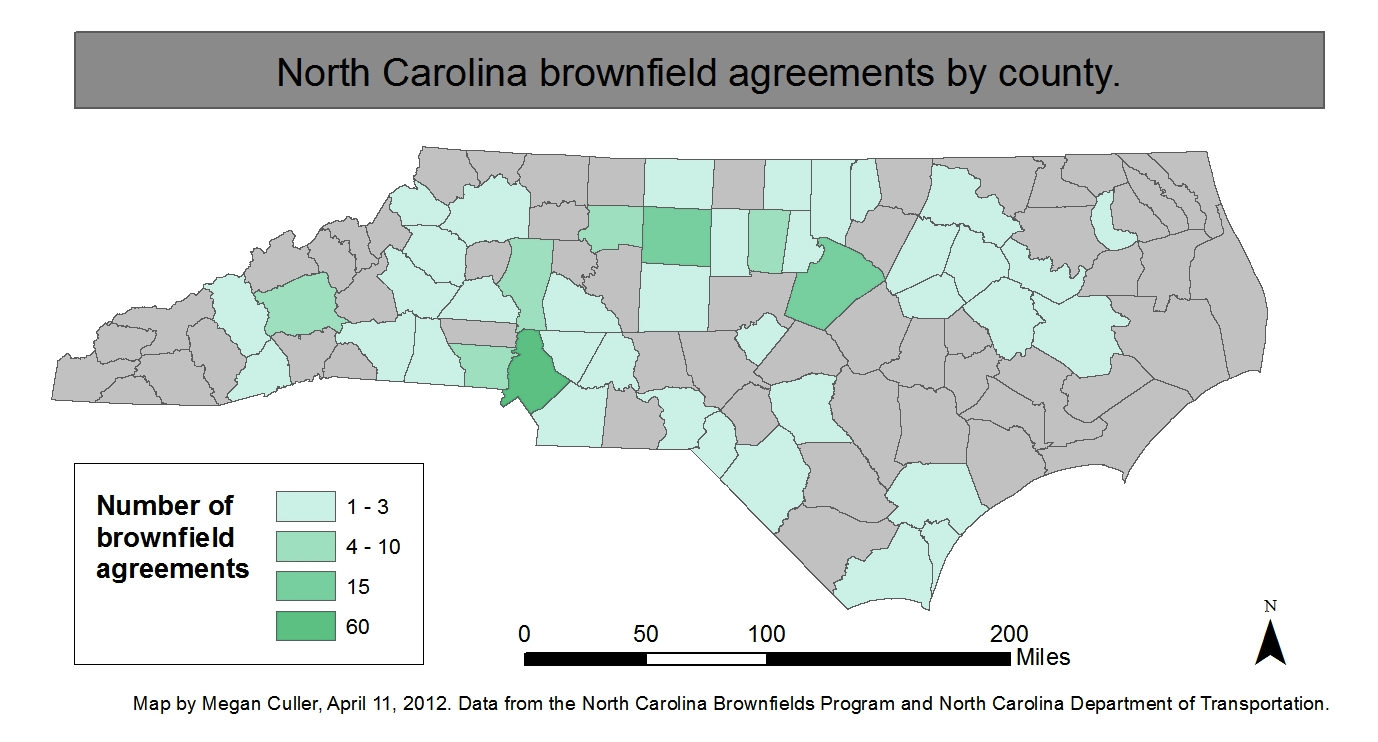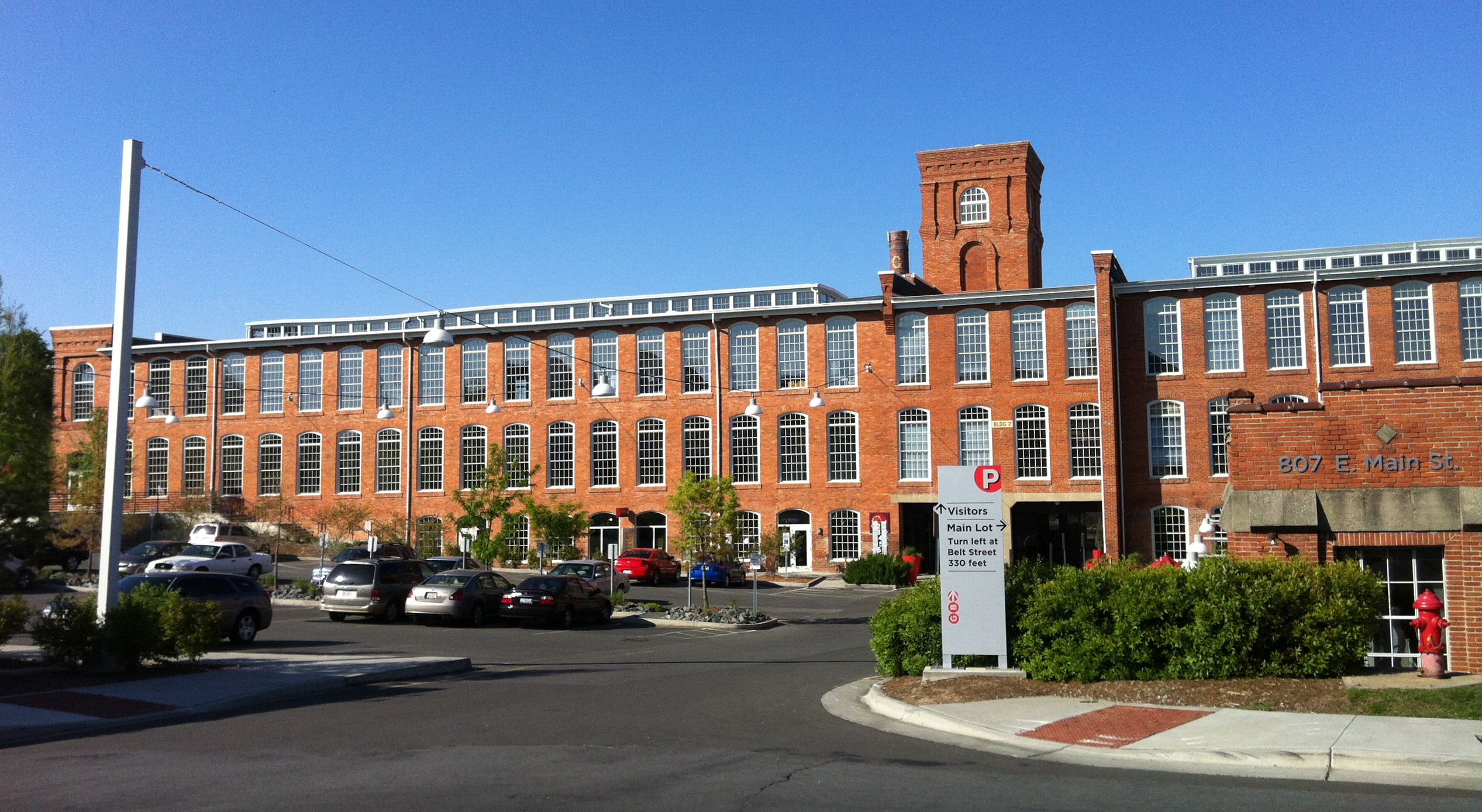The North Carolina Brownfields Program
The North Carolina Brownfields Program was authorized by the 1997 Brownfields Property Reuse Act, and its goal is to encourage the reuse of brownfield properties. Typically, responsible parties must clean a site to meet regulatory standards. Fear of liability is one of the main barriers to re-using brownfields, meaning that property owners often hold onto vacant contaminated properties, or even properties they fear are contaminated, rather than sell them and risk bearing the expense of a cleanup. The Brownfields Program allows a prospective developer who did not cause the contamination to negotiate an agreement that protects them from liability and limits uses of the property to those that would not pose risks. For example, the agreement might allow a site with contaminated soil to be used for a parking deck or an industrial site, but prohibit residential development.

The map above shows brownfield agreements by county as of March 31, 2010, the last date for which data was available.
Brownfield Agreement Success Story

Golden Belt, a historic textile mill, was included in a brownfield agreement due to contamination found in the soil and groundwater. The mill made packaging for tobacco, hosiery, and other products from 1887 until 1996, when part of the site was donated to the Durham Housing Authority. They later sold a portion to Scientific Properties, who have converted the mill to a LEED Certified mixed use site, which now houses offices, artists' studios, and apartments. The site has become a centerpiece of the community and a cornerstone for revitalization in the surrounding neighborhood.